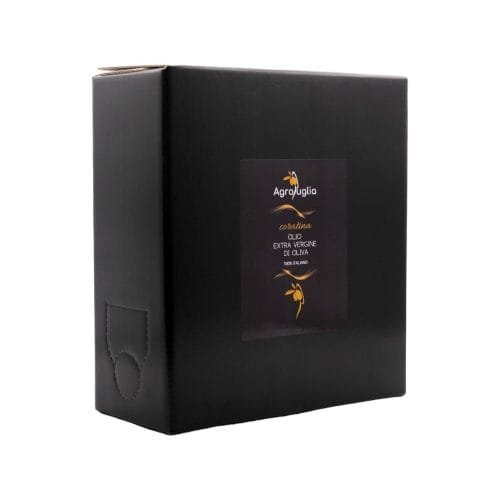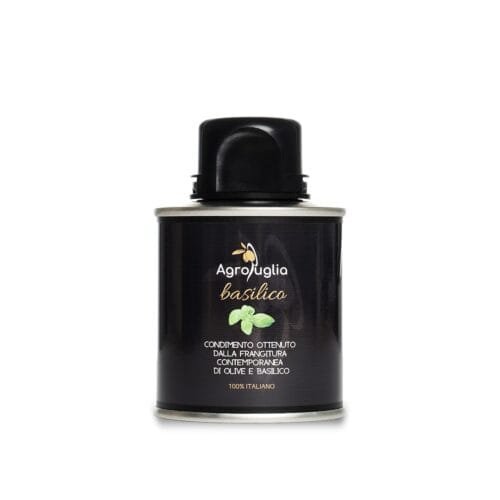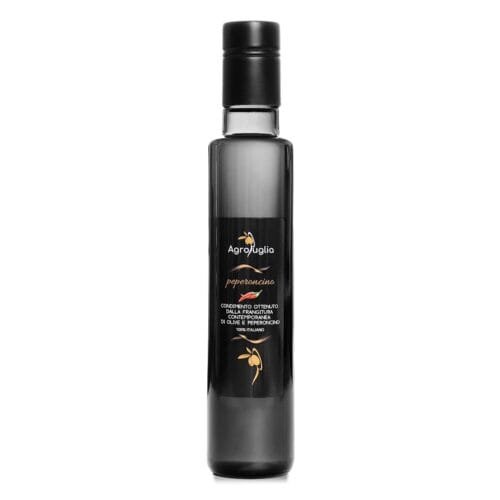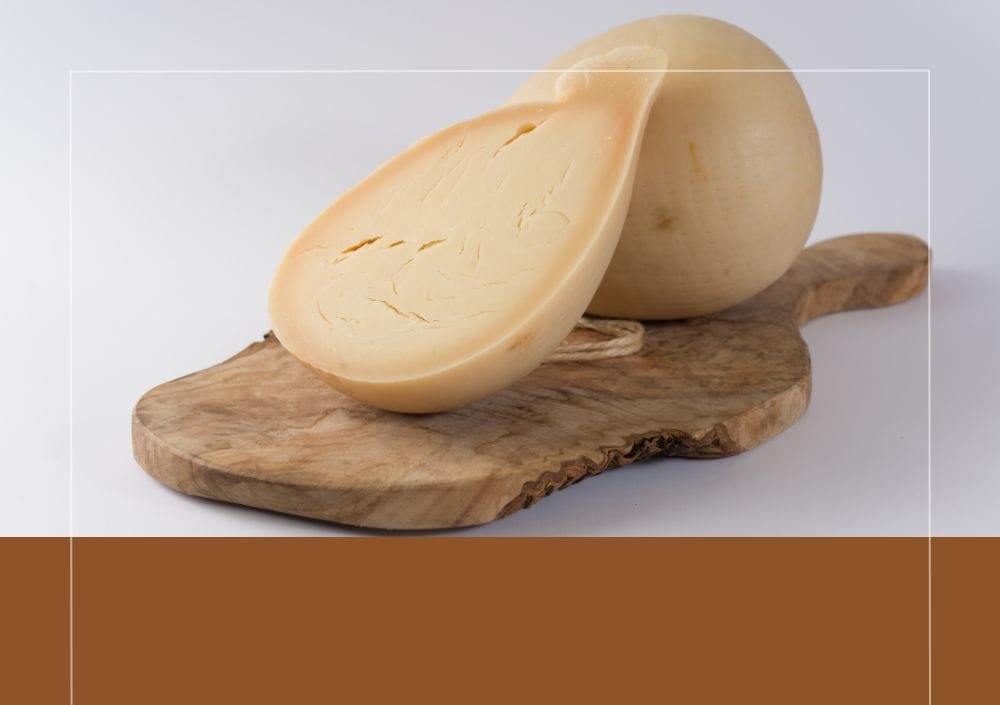Monocultivar extra virgin olive oil represents an excellence in the Italian olive oil landscape. This high-quality product stands out for its purity and unique characteristics linked to the variety of olive used. The monocultivar extra virgin olive oil, such as the Apulian oil obtained from Coratina olives, offers a distinctive organoleptic profile and superior nutritional values.
This article explores the health benefits of monocultivar extra virgin olive oil, rich in omega-3 fatty acids and antioxidant polyphenols. It also focuses on how to choose a quality oil, highlighting the differences between various types available on the market, from 5-liter extra virgin olive oil packages to the Apulian EVO Oil available online. The goal is to provide readers with the necessary information to best appreciate and use this precious food.
What is meant by monocultivar extra virgin olive oil
Definition of monocultivar
Monocultivar extra virgin olive oil, also known as single-variety, is a high-quality product obtained exclusively from a single variety of olives. The term “monocultivar” derives from the Greek “monos” (single) and “cultivar” (cultivation), indicating the use of olives from only one exclusive crop. This type of oil represents a small percentage of Italy’s total production, about 40%, but is highly appreciated by connoisseurs for its rarity and value.
The production of monocultivar oil allows for a product with a complete and distinctive sensory profile, reflecting the unique characteristics of the olive variety used. Each monocultivar has an unmistakable flavor, determined by the close connection between the olive tree and the soil in which it grows. This bond with the land gives the oil a strong personality, making it very representative of the production area.
Differences with multivarietal oils
Unlike monocultivar oils, multivarietal oils, also known as blends or coupage, are produced using different varieties of olives. These oils are more common on the market and have different characteristics:
- Composition: Blends combine different varieties of olives or extra virgin oils to create a balanced product.
- Flavor stability: Multivarietal oils tend to have a more homogeneous and consistent flavor over time.
- Production: They are generally produced in larger quantities than monocultivar oils.
- Adaptability: Blends can be created to meet market needs and cater to a broader audience’s tastes.
Monocultivar oils, on the other hand, are more sensitive to the year’s climatic conditions and are produced in limited quantities, which makes them more prized and sought after.
Main Italian cultivars
Italy boasts rich olive biodiversity, with about 600 varieties present throughout the national territory. Some of the most renowned and appreciated cultivars include:
- Coratina: Widely spread in Puglia, it produces oil with an intense and spicy flavor.
- Frantoio: Typical of central Italy, particularly Umbria, Marche, and Tuscany.
- Leccino: One of the most widespread varieties, especially in Tuscany.
- Cerasuola: Mainly cultivated in Sicily, particularly in the province of Trapani.
- Nocellara del Belice: Native to the Belice Valley in Sicily, it produces oil with a deep green color and golden highlights.
Each cultivar gives the oil unique organoleptic characteristics, reflecting the typicality of the region of origin and contributing to the richness and diversity of Italy’s olive-growing heritage.
Health benefits of monocultivar extra virgin olive oil
Monocultivar extra virgin olive oil is recognized as a true elixir of health, offering numerous benefits for the body. Its uniqueness lies in the presence of bioactive components that make it a highly valuable functional food.
Polyphenol and antioxidant content
Polyphenols, abundantly present in monocultivar extra virgin olive oil, are powerful natural antioxidants. These compounds have the ability to counteract oxidative stress on cells, protecting them from damage caused by free radicals and pollutants. The antioxidant action of polyphenols has a significant impact on health, helping to slow down the aging process and reduce the incidence of certain degenerative diseases.
Among the most important polyphenols are oleocanthal, oleacin, oleuropein, and hydroxytyrosol. Oleocanthal, responsible for the characteristic throat “sting,” has anti-inflammatory properties comparable to those of ibuprofen. Oleacin has shown remarkable anti-atherosclerotic and antihypertensive effects, while oleuropein is known for its ability to lower blood pressure and protect the hypothalamus from oxidative stress. Hydroxytyrosol, finally, stands out for its extraordinary antioxidant properties, even superior to those of green tea and coenzyme Q10.
Positive effects on the cardiovascular system
Monocultivar extra virgin olive oil plays a protective role in the cardiovascular system. The monounsaturated fatty acids and phenolic compounds present in the oil help reduce LDL cholesterol levels (the so-called “bad cholesterol”) and increase HDL levels (the “good cholesterol”). This effect helps prevent atherosclerosis and maintain heart and arterial health.
Furthermore, extra virgin olive oil contains a protein that inhibits platelet aggregation, thus reducing the risk of thrombosis and, consequently, strokes and heart attacks. These benefits make monocultivar extra virgin olive oil a key food for preventing cardiovascular diseases.
Anti-inflammatory properties
The anti-inflammatory properties of monocultivar extra virgin olive oil are mainly due to the presence of oleocanthal and other bioactive compounds. These elements can reduce inflammation in the body, thus helping to prevent various chronic diseases.
The anti-inflammatory action of monocultivar extra virgin olive oil also extends to the nervous system, offering potential benefits in preventing neurodegenerative diseases such as Alzheimer’s and Parkinson’s. Additionally, its anti-inflammatory properties may positively affect metabolism, helping with weight management and blood glucose control.
How to choose a quality monocultivar extra virgin olive oil
Read the label
Choosing a quality monocultivar extra virgin olive oil starts with carefully reading the label. This provides crucial information about the product, such as the sales denomination, origin, production method, and harvest campaign. It is important to verify that the label clearly states “extra virgin olive oil” and specifies the variety of olive used. The label must also indicate the country of origin and, for PDO and PGI oils, information related to the production specification.
Evaluate organoleptic characteristics
Evaluating organoleptic characteristics is essential to recognize quality oil. Begin with the visual examination by pouring a small amount of oil into a glass and observing its fluidity. A quality oil should have low fluidity. The olfactory analysis requires slightly warming the glass and smelling the oil: a good monocultivar oil should have a fragrance reminiscent of fresh or ripe fruit. For taste evaluation, distribute a small amount of oil on the palate, sucking in air to perceive all the aromas. A prized oil stands out for its bitter and spicy notes.
Check the production date
Freshness is a key factor for the quality of extra virgin olive oil monocultivar. It is important to check the production date and minimum shelf life. The law requires the label to indicate the harvest campaign if 100% of the oil comes from that harvest. The minimum shelf life, generally between 12 and 18 months from bottling, must be clearly indicated. It is advisable to choose oils from the most recent campaign to ensure maximum freshness and full expression of varietal characteristics.
Conclusion
Monocultivar extra virgin olive oil stands out as a high-quality product, with a unique sensory profile and significant health benefits. Its richness in polyphenols and antioxidants positively impacts the cardiovascular system and offers anti-inflammatory properties. Choosing a quality oil requires attention to the label, organoleptic characteristics, and production date, thus ensuring a superior taste experience and maximum nutritional benefits.
To fully appreciate the qualities of monocultivar extra virgin olive oil, it is essential to know the different varieties and their connection to the territory. This allows you to enhance Italy’s olive-growing biodiversity and enjoy a product that reflects the richness of our country’s gastronomic heritage. To savor the authenticity of high-quality monocultivar extra virgin olive oil, we invite you to visit our online shop and purchase our extra virgin olive oil.
FAQ
What health benefits does extra virgin olive oil offer?
Extra virgin olive oil is known for its numerous health benefits, including the prevention of cardiovascular diseases, antioxidant properties that combat diabetes, lowering blood pressure, and its ability to prevent wrinkles and moisturize the skin.
Does extra virgin olive oil have anti-inflammatory properties?
Yes, extra virgin olive oil contains oleocanthal, a substance that has been shown to have anti-inflammatory effects similar to those of ibuprofen, a common non-steroidal anti-inflammatory drug. This has been confirmed by several scientific studies.
In which home remedies can olive oil be used?
Olive oil is used in various natural remedies, including treating burns, relieving earaches, and helping with earwax removal. It is also used to prevent hair loss, as an anti-wrinkle treatment, to relieve rheumatism and sprains, and against dry skin and psoriasis.
Which type of oil should be used by those with high cholesterol?
For those with high cholesterol, corn seed oil is recommended as an effective choice to lower bad cholesterol levels in the blood and keep total cholesterol in balance, according to studies conducted by MérieuxNutriSciences.

















